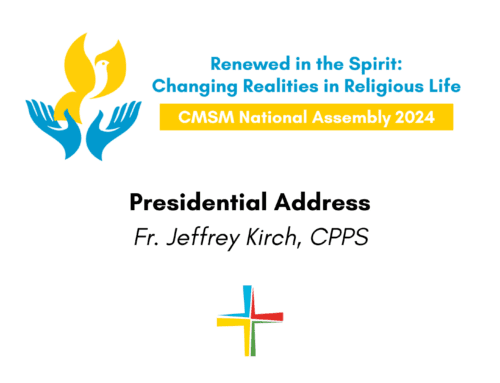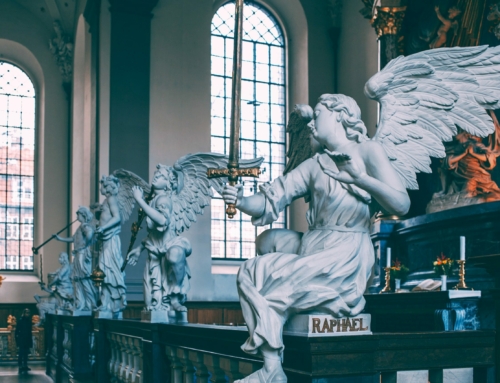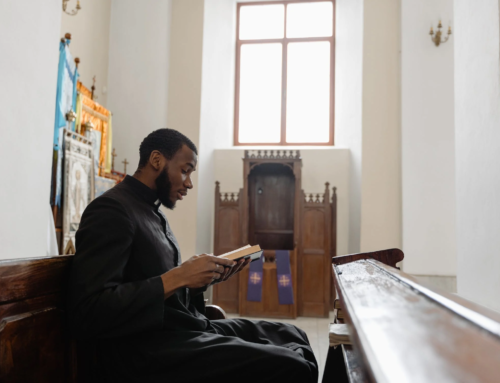Fr. Aaron Wessman, GHM reflects on an unexpected lesson from the pandemic: the gift of true and open listening that his community stumbled upon while quarantining during the first waves of the pandemic. Reflecting on that experience, he asks what lessons it might hold for others thinking about how to enact synodality. Click here to download a copy of this essay.
Soldiers often express how challenging it is to describe their experiences of war to those they encounter after returning home. Words fall short. There is fear of being misunderstood. For many, trauma can be lonely.
Though not equal to war, the pandemic has been, and continues to be, a traumatic experience. I suspect that many people, including religious, are struggling to integrate this trauma, and to find words that capture how they feel, what they experienced, and how they are trying to move forward.
I hesitate, while we are all still in the midst of this tumult, to try and portray it through words. I admit I don’t know exactly how to make sense of the last nearly two years.
However, I feel it is important to express one reality for me of the pandemic. I think lessons learned from this experience, within my religious community, might assist the Church as She seeks to embrace, and enter into, the present Synod on Synodality.
Lessons Learned
Throughout the first year of the pandemic, serving as vicar general, I lived in the main residence of the motherhouse of the Glenmary Home Missioners. Though housing men in active ministry, the residence is also home to many of our senior members.
These are men who gave their entire life to mission. They are pillars of the community.
Of course, as we learned early on about this devastating virus, because of age, these were vulnerable men.
This meant that, until we were all vaccinated, we chose to live a quarantined existence.
Trips were canceled. Plans were changed. Even the younger men, such as myself, and those in positions of leadership, ceased doing ministry outside the compound. Guests were not welcomed. Our liturgies were closed to the public. For months, our community consisted almost solely of the sixteen Glenmary men who lived together.
There were blessings, of course. We were not alone. We had food. Shelter. Prayer. The Sacraments. We organized special activities. We had acres upon which we could stretch our legs. We even had employees who did our shopping in order to keep us safe.
But it was still, once in a while, almost unbearable. I wish I didn’t have to say that. But it was. We could not leave. People struggled with their emotional health. Tensions were heightened. Tempers sometimes flared. It was not how I envisioned my life as a healthy and active 38-year-old, to be sure. It was not what I expected being a leader of my community.
But grace was present.
I do not recall exactly how it started. Sometime in the beginning of the pandemic, when the world we all knew changed, our small community began, as a group, a special practice.
Following an hour of Eucharistic exposition and vespers, we sat in a large circle, facing each other. No one was the leader. We sat as equals. Even Glenmary’s Superior General was one among brothers.
There was no agenda, except, if we chose, to share our emotions, to speak from the heart, to put words to the ways we were going through the uncertainty. Sixteen men sitting in a circle sharing their feelings about a worldwide catastrophe is an unusual event—and if you knew our community, you would really get a sense at how unusual this was.
But we actually shared. What is more, we listened.
We shared fears, frustrations, sadness, anxieties, and even hopes and dreams. No one corrected anyone. No one was an authority. No one interrupted. Heart spoke to heart.
Coupled with our sharing were long moments of silence. Some days nothing was said. We sat in silence for five, ten, even fifteen minutes—which sometimes seemed like an eternity. We sat with the uneasiness. We listened to each other breathe, loving each other in the silence. When it seemed appropriate someone excused the group, and we walked away.
Almost universally, including even the usual curmudgeonly suspects, people praised the intimacy and connection they felt within the group. “We have never done this in Glenmary,” some said. “The Spirit of God seems to be in our midst,” another commented. “Maybe this is a new way of being a community of missioners.”
I admit that in as much as the kingdom of God breaks into our lives during various moments, this was certainly one for us.
Wisdom for the Synod
The Synod on Synodality is upon us. Like the pandemic, it will be an historic moment for the Church in the United States. There will be instances of tension, uncertainty, and struggle. There will also be times of hope and joy.
Right now, we as a Church are searching for ways to move forward, to take seriously the invitation from Pope Francis. Perhaps the lessons we learned in Glenmary from the pandemic can assist, if even in a small way, the synodal process.
What would it mean for small groups of people to come together, sit in a circle, and share from the heart? How might grace operate if people from all walks of life talked about their experience of Catholicism, Christianity, faith, or even unbelief? Would the Spirit be given an opening if various factions of the Church sat quietly together, loving each other in the silence? How might we be converted if we listened to one another’s struggles in, or dreams for, the Church—and actually felt as if we were heard?
The Church’s hierarchical structure is a gift of the Spirit. This structure is necessary and essential. But as my experience in the pandemic proved, there are moments when it is best for people to sit in the presence of each other as brothers and sisters, as people of God, one in the Body of Christ, equals among equals.
The pandemic provided my community a beautiful lesson about sharing, listening, and approaching challenges together. Perhaps this lesson can serve as wisdom for the Synod.
Header image: Rembrandt van Rijn, “Christ Appearing to the Apostles” (1656). Etching. https://clevelandart.org/art/1960.161. Cleveland Museum of Art.






